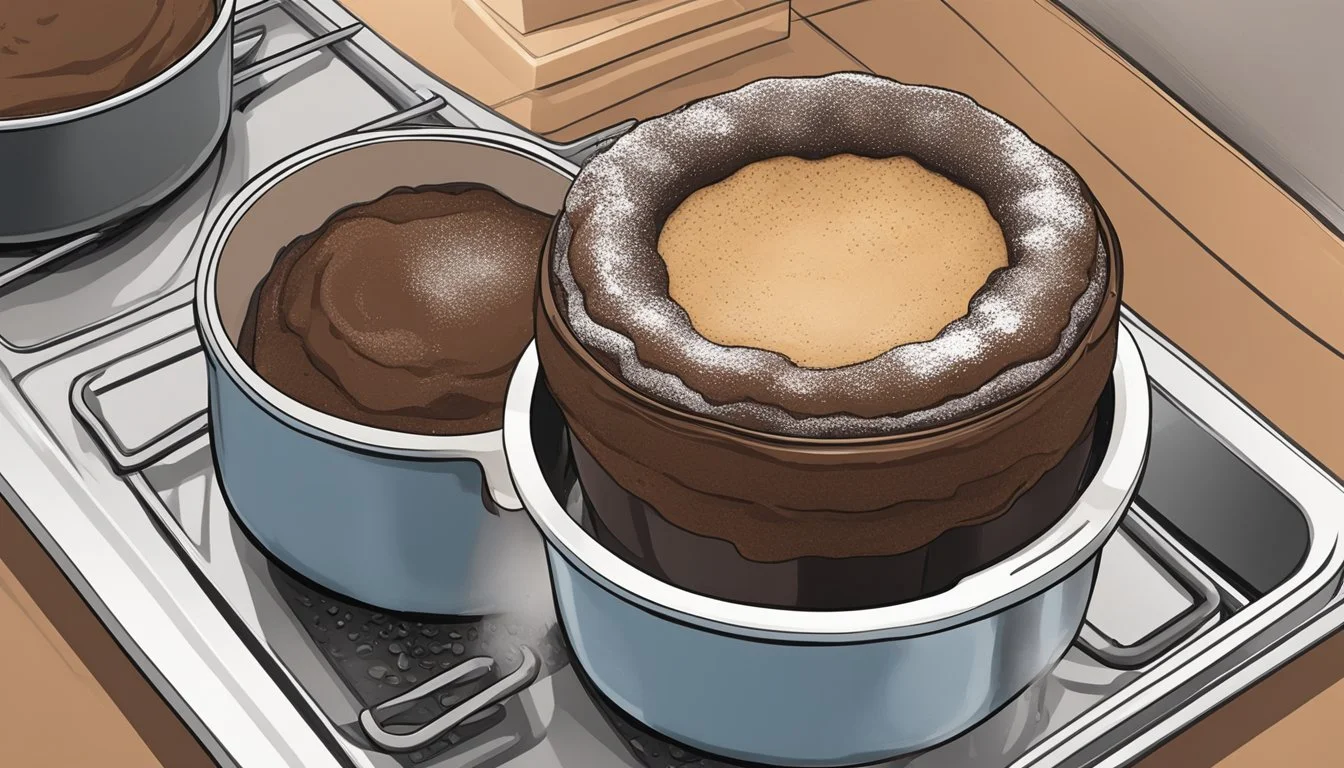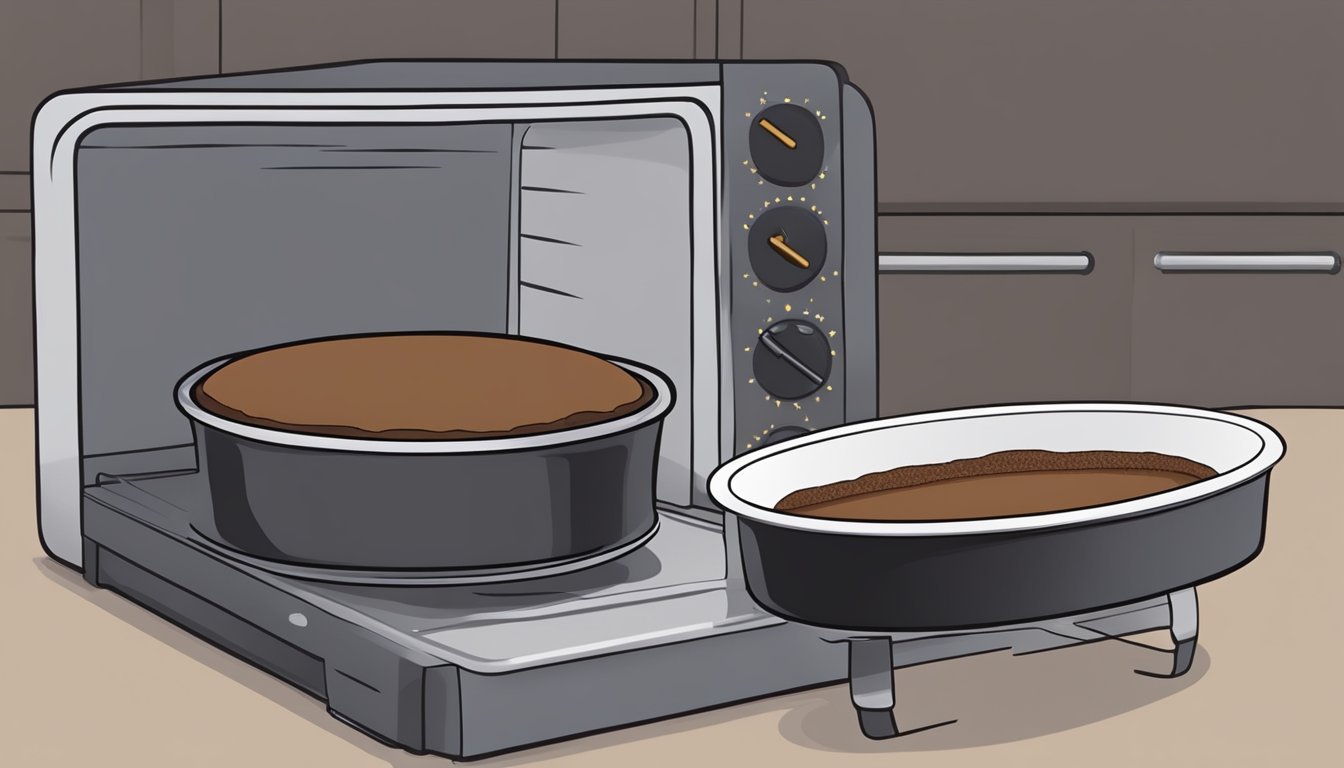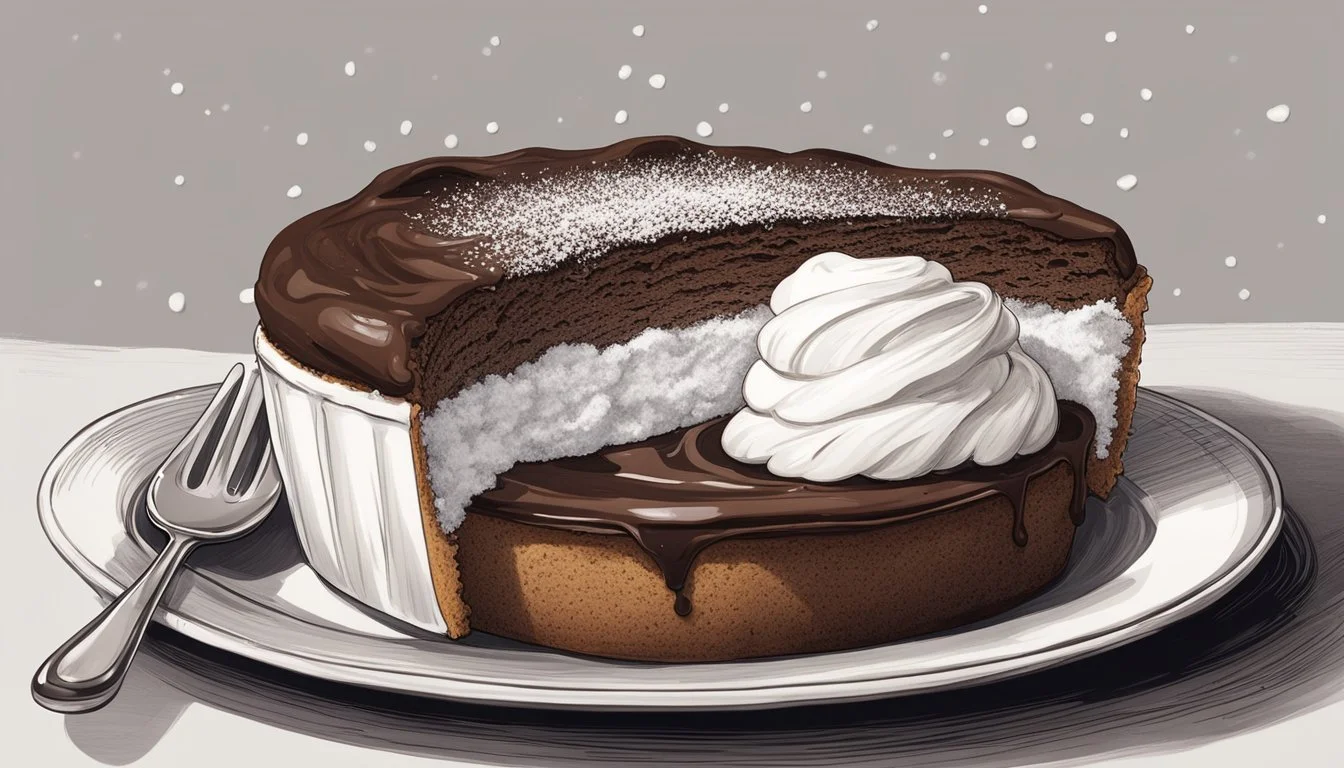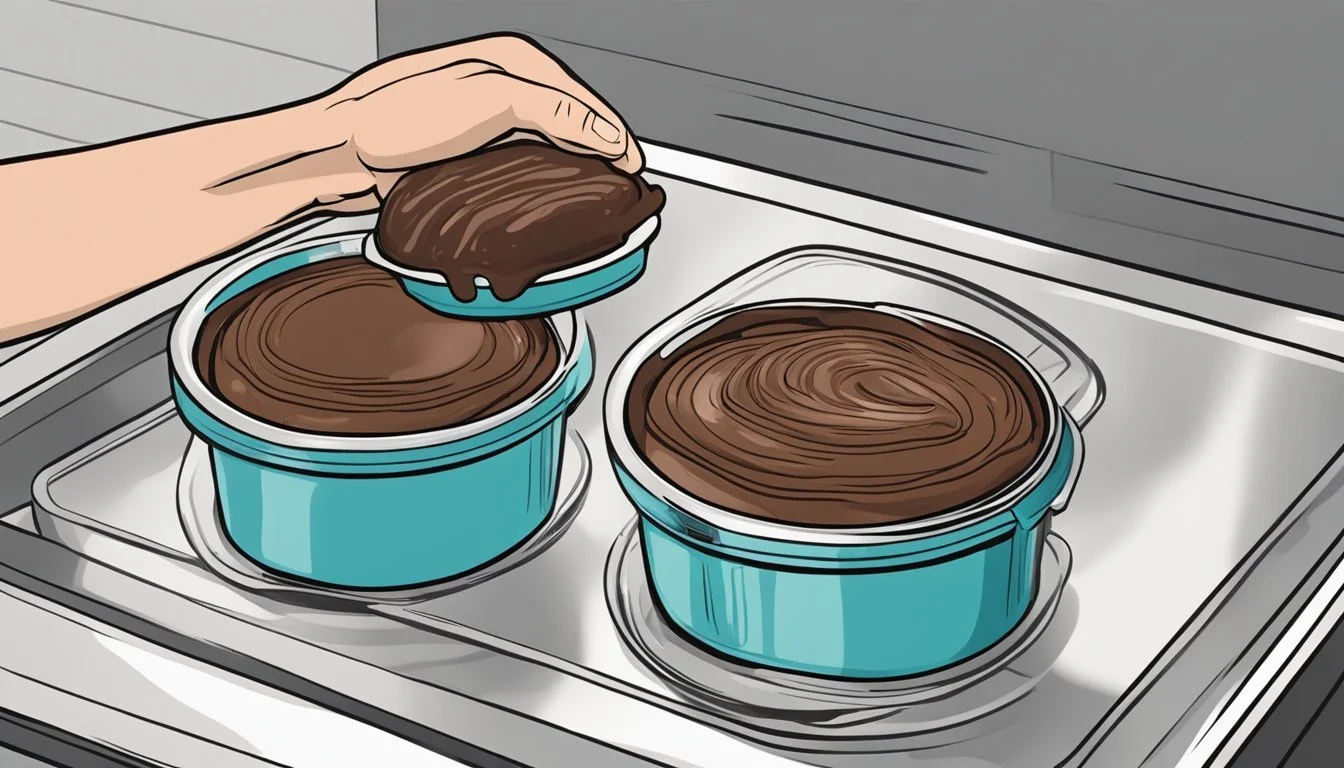How to Reheat Chocolate Soufflé
Perfect Consistency Every Time
Reheating a chocolate soufflé can be a delicate task, but with the right approach, it's possible to bring back its warm, fluffy texture and rich flavor. The key is to use an oven, as it ensures even reheating without risking the delicate structure of the soufflé. Start by preheating your oven to around 350°F (175°C). This gentle heat preserves the soufflé's light and airy consistency while preventing it from drying out or collapsing.
When reheating, place the soufflé on a baking tray to catch any potential overflow. Cover it lightly with aluminum foil to retain moisture. Bake the soufflé for about 8-10 minutes, checking frequently to ensure it doesn't overcook. This method allows the dessert to regain its original charm, making it as delightful as when it was freshly baked.
Microwave reheating, while tempting due to its speed, typically disrupts the soufflé's texture. Therefore, patience and methodical reheating in an oven prove to be the best technique. This approach guarantees a perfect balance of a slightly crisp top and a warm, gooey center, making your chocolate soufflé just as enjoyable the second time around.
Understanding Chocolate Soufflé
A chocolate soufflé is a delicate dessert renowned for its light, airy texture and rich chocolate flavor. Its success hinges on the harmony of ingredients and precise techniques that contribute to its rise and unique mouthfeel.
Essential Ingredients and Their Roles
Egg whites and egg yolks are fundamental to a chocolate soufflé. Egg whites are whipped into a foam, creating air bubbles that give the soufflé its lift. Egg yolks provide richness and structure, ensuring the soufflé isn't overly airy.
Sugar sweetens the dessert and stabilizes the egg whites during whipping. Sugar also contributes to the soufflé's delightful crust.
Unsalted butter adds richness and helps meld the chocolate smoothly. Butter also greases the ramekins, allowing the soufflé to rise evenly.
Chocolate is the star, delivering deep, robust flavor. Quality chocolate influences the soufflé's final taste.
The Science of the Soufflé Rise
The rise of a soufflé is a result of the interplay between heat and the air trapped in the egg white foam. When baked, the air expands, pushing the soufflé up. Properly beating the egg whites to stiff peaks is crucial to form a stable foam.
Overbeating can cause the whites to dry out, while underbeating won't incorporate enough air. The oven’s initial blast of heat sets the outer structure quickly, while the interior remains soft, allowing for continued expansion.
Maintaining the oven temperature and avoiding sudden movements prevents collapse.
Texture and Flavor Profile
A perfect chocolate soufflé features a contrast of textures: a crisp, slightly caramelized exterior and a soft, airy interior. The texture is light and fluffy, thanks to the air incorporated in the egg whites.
The flavor is rich and intensely chocolatey, balanced by the sweetness of the sugar and the smoothness of the butter. This combination results in a dessert that is both decadent and delicately airy.
Preparation Before Reheating
Proper preparation is essential for maintaining the delicate texture and rise of a chocolate soufflé. This section covers optimal storage methods and steps to follow before reheating.
Storing a Baked Soufflé
To store a baked soufflé, ensure it cools down completely before refrigerating. Using plastic wrap, cover the top of the ramekin tightly. This prevents moisture loss and keeps the soufflé from drying out.
For short-term storage, place the covered ramekins in the refrigerator. They can be kept there for up to 2-3 days.
For longer storage, freezing is an option. Before freezing, cover the soufflés in an additional layer of aluminum foil. To defrost, place the ramekins in the refrigerator overnight.
Avoid leaving the soufflé at room temperature for extended periods, as this can compromise its texture and taste.
Prepping the Soufflé for Reheat
Before reheating, ensure that the soufflés are properly defrosted if they were frozen. They should be placed in the refrigerator for adequate defrosting, typically overnight.
Preheat the oven to around 350°F (175°C). Ensure the oven is fully heated before placing the soufflés inside. This ensures even reheating.
Remove the plastic wrap from the top of the ramekins, but keep them covered with the aluminum foil for the initial reheating phase. This helps retain moisture.
Reheat for about 10-15 minutes, checking periodically. The top should be slightly crispy but not burnt, and the center should be warm.
Serve immediately after reheating for the best texture and taste.
Reheating Techniques
When reheating chocolate soufflé, it's crucial to maintain the delicate texture and rise. Utilizing the oven or microwave methods can help achieve optimal results, and understanding common pitfalls can enhance the reheating process.
Oven Reheating for Optimal Rise
Reheating in the oven is ideal for preserving the soufflé's characteristic rise. Preheat the oven to 300°F (150°C) to ensure a gentle, even heat.
Place the soufflé on a baking tray lined with parchment paper. Cover it lightly with aluminum foil to prevent the top from overcooking. Heat for about 10-15 minutes, checking frequently to avoid overcooking.
Serve immediately after reheating. This method is perfect when serving guests, as it maintains the soufflé’s structure and texture, allowing it to be enjoyed just like when it was freshly baked.
Microwave Method for Quick Serve
The microwave offers a quicker alternative for reheating chocolate soufflé. Although this method may compromise slight texture, it works well for a fast serve.
Place the soufflé in a microwave-safe dish. Set the microwave to medium power to avoid overheating. Heat in 20-second intervals, checking the texture after each interval.
Be cautious not to overheat, as this can cause the soufflé to dry out or collapse. Serve immediately for the best temperature and texture. This method is convenient for individual servings, ideal for quick indulgence.
Avoiding Common Reheating Mistakes
Reheating soufflés can be tricky. Common mistakes include overheating, which dries out the soufflé, and uneven reheating, which causes it to collapse.
Always use a gentle heat method. Avoid high temperatures that could cause rapid expansion and deflation. Covering the soufflé during reheating can help retain moisture and prevent overcooking.
When serving guests, reheating small portions at a time ensures consistent quality. Proper reheating techniques can make a significant difference in maintaining the soufflé's delicate texture and rich flavor, ensuring a delightful experience.
Serving and Presentation
Serving a reheated chocolate soufflé involves both enhancing its flavor and presenting it aesthetically. Accompaniments and toppings like whipped cream or fresh berries can elevate the taste, while plating techniques contribute to the overall visual appeal.
Accompaniments and Toppings
A variety of toppings can enhance the flavor and presentation of a chocolate soufflé. Common choices include whipped cream, which adds a light, airy contrast to the rich chocolate. A drizzle of chocolate sauce or ganache can deepen the chocolate experience. Raspberries and other fresh berries offer a tart contrast, balancing the sweetness.
Dusting the top with powdered sugar can create an elegant look, adding a slight sweetness. Consider serving the soufflé with a side of nuts or a sprig of fresh mint for added visual and textural appeal. These accompaniments not only enhance the flavor but also make the dessert look more decadent.
Plating Techniques for Elegance
Careful plating techniques can make a reheated chocolate soufflé look professionally prepared. Use a clean, white plate to highlight the soufflé's dark, rich color. Place the soufflé at the center of the plate for a balanced presentation.
Surround the soufflé with a small pool of chocolate sauce or ganache. Scatter a few fresh berries or raspberries around the plate. Add a dollop of whipped cream next to the soufflé. For a finishing touch, sprinkle powdered sugar over the top using a fine sieve.
These details create an inviting look that enhances the dining experience.
Creating Variations of Chocolate Soufflé
Experimenting with various ingredients can yield unique and delightful chocolate soufflé variations worth trying.
Incorporating Different Chocolates
The type of chocolate used can significantly alter the flavor and texture of the soufflé. Dark chocolate offers a rich, intense flavor that appeals to those who enjoy a deeper chocolate experience. Semi-sweet chocolate balances sweetness and depth, making it a versatile choice. For a milder flavor, milk chocolate can be used, providing a creamier texture and a sweeter taste. White chocolate, though not a true chocolate, adds a vanilla-like flavor and a creamy consistency, giving an exciting twist to the classic soufflé.
Different chocolates also affect the soufflé's color and mouthfeel. Quality chocolate is essential for the best results, ensuring a smooth, luscious center. Adjusting the chocolate type is an easy way to customize the dessert to personal preference or occasion.
Infusing Additional Flavors
Adding various flavors can further enhance and differentiate the chocolate soufflé. Vanilla extract is a popular addition, bringing warmth and depth to the chocolate. For a bold contrast, consider adding a pinch of salt, which emphasizes the chocolate's richness. Adventurous bakers might incorporate citrus zest or spices like cinnamon or chili for a surprising kick.
Herbs like mint or lavender can be infused into the batter for a refreshing and aromatic profile. Fruit purees, such as raspberry or orange, can be folded into the mixture or served as a sauce on the side, offering a fruity balance to the chocolate. These additions allow for creativity and personalization, making each soufflé unique.
Troubleshooting Common Issues
Effectively reheating a chocolate soufflé involves addressing potential problems such as deflation, cracking, and sticking. Each issue can be mitigated with specific techniques and attention to oven temperature.
Dealing with Deflating Soufflés
A common issue when reheating chocolate soufflés is deflation, which can occur if the soufflé loses its rise.
To prevent this, it's crucial to preheat the oven to a moderate temperature, around 350°F (175°C). Place the soufflé in the oven before it cools too much to maintain its structure. Another technique involves using a water bath, which adds moisture and prevents the soufflé from drying out and collapsing.
Additionally, avoid opening the oven door frequently during reheating. Rapid temperature changes can cause deflation. For extra stability, some chefs recommend adding a little extra egg white to the mix, which might help maintain the rise.
Preventing Cracks and Sticking
Cracks and sticking are other common issues that can ruin a perfectly good soufflé. To avoid these problems, ensure the soufflé dish is well-prepared.
Grease the dish thoroughly with butter and dust with sugar before baking. This creates a non-stick surface which helps during both baking and reheating. If cracks appear, it might indicate that the oven temperature is too high. Lowering the temperature slightly can provide a gentler reheating process.
Another tip is to avoid over-mixing the batter when initially preparing the soufflé. Over-mixing can lead to cracks as the mixture can become too dense.
By following these techniques and paying careful attention to oven temperature and preparation, these common issues can be effectively addressed, allowing for a beautifully reheated chocolate soufflé.






